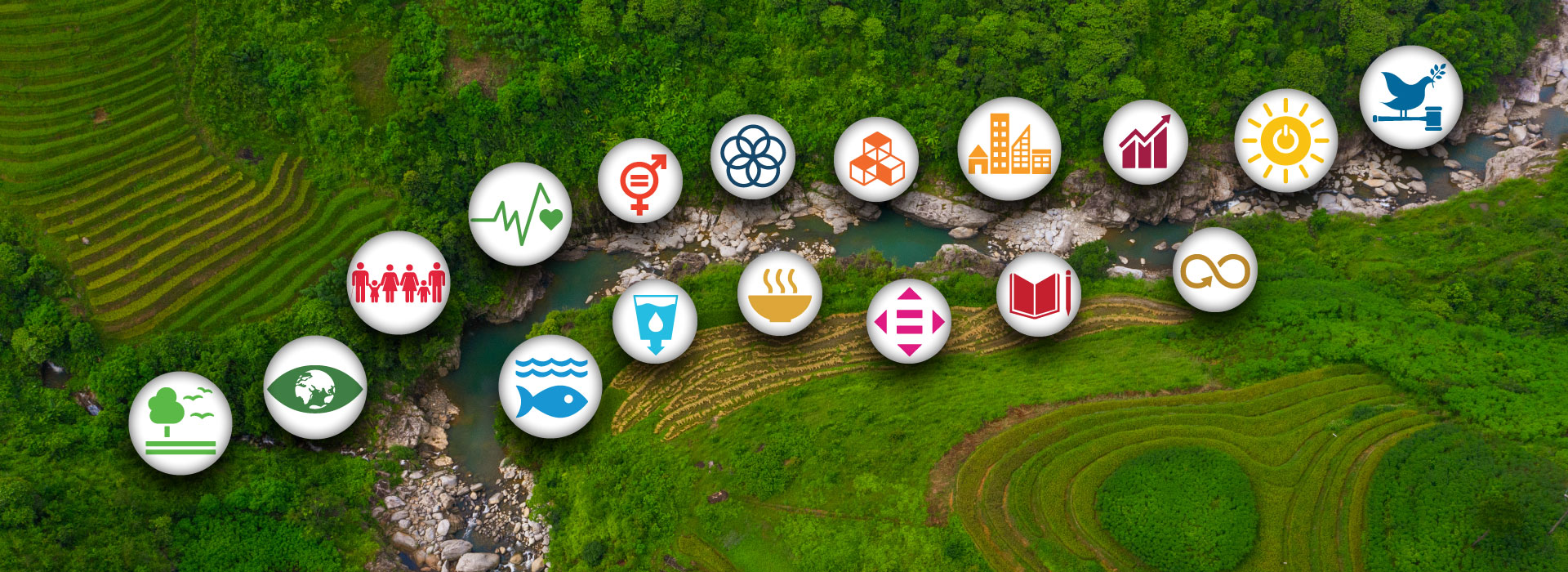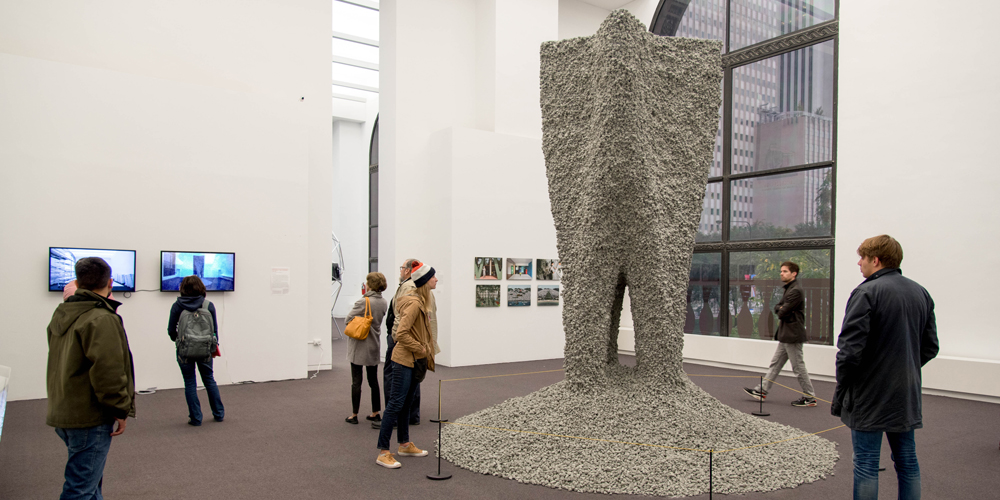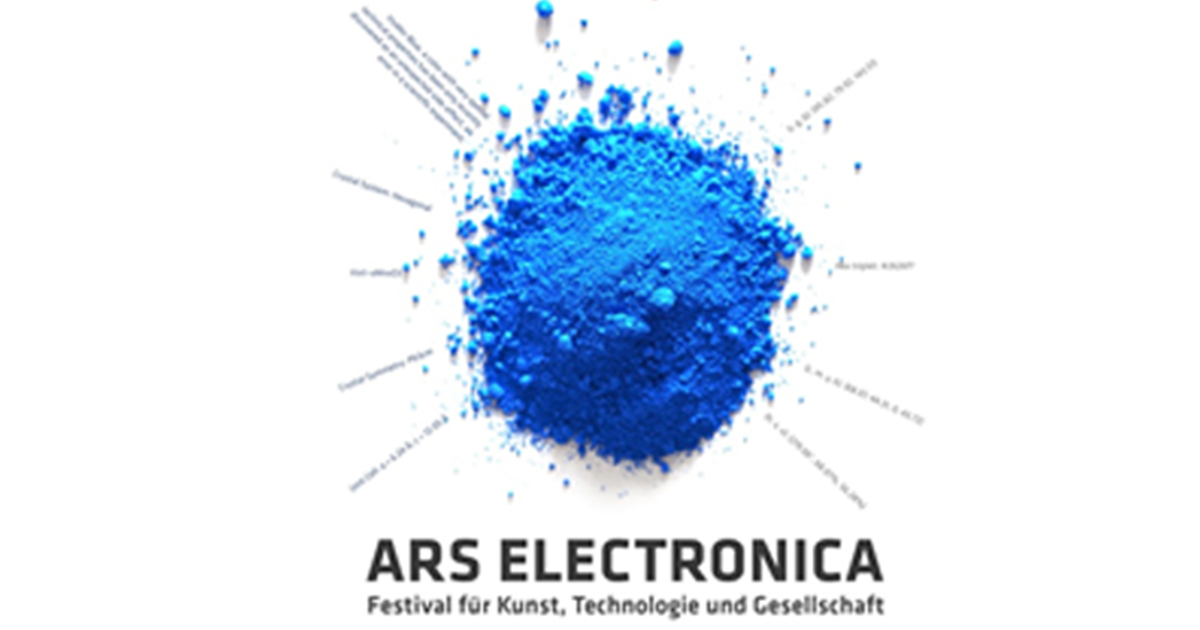In addition to being based in Europe’s geographical center, Ars Electronica Linz organizes several closely woven cooperative projects across this continent. Such international innovation often leads to interdisciplinary collaborations that extend far beyond Austria’s borders. Artists, scholars, and business people regularly collaborate on exciting projects beyond Austria.

It directs two organizations in Europe that are among the most widespread in their cooperative activities—the STARTS Prize launched two years ago by the European Commission to honor outstanding projects at the intersection of science, technology, and art, and the European Digital Arts & Science Network to link artists and scientists. In addition to the European Network for Contemporary Audiovisual Creation, Linz-based media artist is also involved in other networks.
Our interview with Martin Honzik and Veronika Liebl, Festival Director and Producer of Ars Electronica Festival, sheds some light on the projects and how they fit into this year’s program.
The STARTS Prize, awarded by Ars Electronica on behalf of the European Commission for the second time this year, is one of the most important EU projects. Why is STARTS being launched, and what are its goals?
Veronika Liebl: STARTS is an initiative of the European Commission, which concluded that technology and scientific know-how alone couldn’t help a company survive in the competitive world after years of subsidizing programs. Moreover, in the process of developing new products, services, and processes, social reflection and creativity don’t play enough of a role. As part of Horizon 2020, several approaches were proposed for integrating creativity and social thinking into research and development.
STARTS integrates several socially relevant aspects into scientific processes, including the involvement of creative artists.
In other words, it’s about taking an alternative viewpoint and conceiving things alternatively. In Europe, the hope is to foster innovation through a combination of art and creativity, particularly in IT and telecommunications, says Veronika Liebl. The question was essentially commissioned by Martin Honzik. We contact our networks and contacts in the academic and private sectors to look for collaborations that go beyond conventional channels.
Of course, artists are individuals whose perspectives as well as their understanding of technological advancements enable them to create new perspectives. Ars Electronica doesn’t organize STARTS by itself, but it is part of it. A few partner institutions are also involved. In collaboration with BOZAR in Brussels and the Waag Society, we were commissioned to stage the STARTS Prize. The STARTS Prize is joined by a residency program, VERTIGO STARTS. Two scientific partners, the Centre Pompidou and the IRCAM Institute, are also partners in this program.
Veronika Liebl: Projects that receive the STARTS Prize have already achieved great success, demonstrate how innovative such collaborations between art and industry can be, and exemplify trailblazing forms of cooperation between the two. On the other hand, VERTIGO STARTS hosts residencies that bring scientists, engineers, researchers, labs, and institutions together to launch projects.
Innovation Collaboration
In two categories, the STARTS Prizes endowments are each worth €20,000. Which category is different?
Valentina Liebl: The first STARTS Prize category, Innovative Collaboration, seeks to showcase outstanding examples of the collaboration between science and art or business and design. Several people from different fields collaborate to create an innovative project, such as someone from a creative field collaborating with someone from a scientific field and vice versa.
In the second category, Artistic Exploration, artists whose work exhibits an innovative artistic application of a technology instance, in the development of new production techniques or materials honored.As part of the assessment criteria, social innovation and innovations in production rank very high, according to Martin Honzik. It must be clear what the potential is. Essentially, artistic applications create new developments in a major sector.
STARTS is exactly about that, says Veronika Liebl. Etsuko Yakushimaro, the winner of the Best of Artistic Exploration award for this year, is a fantastic example. In this case, she uses DNA as a storage medium for music in her artistic research and creative work. There are methods of storing data in DNA. Martin Honzik: The methods are quite sophisticated. Among Etsuko Yakushimaro’s hits is an mp3 file stored in her DNA. This is exactly how we will proceed.
We will simply develop new storage media in the future – such as organic ones. Biochemically sequencing these media is required to store whatever is required. Understanding how the medium is structured biologically will allow you to then refine it once more.” Rock Print,” the second winning entry, emphasizes construction industry practices. According to Martin Honzik, “Rock Print” was developed by Gramazio Kohler Research, an ETH-ETH Zurich research group.

Using oversized 3-D printers, they redesigned construction production processes. Building material is bonded together by using a “red thread” instead of cement between layers. The construction industry might take a big step forward with this approach. It was the idea of constructing something that allowed for its deconstruction that impressed us and the jury members. A robot pulls on the end of the “thread” and tears the sculpture down after the “thread” is attached to the structure.
This is part of the concept of the “Rock Print” sculpture that was submitted for prize consideration. It is a basic principle that’s sorely lacking in society today that a constructor assumes responsibility for the disposal of the work once it is done.
At this nexus of art and science, how does Ars Electronica interpret STARTS’ potential?
Marten Honzik: Ars Electronica offers a platform for artists who normally do not have representation in the art market. It’s intriguing to see where these technologically proficient artists find an audience with their high levels of skill and sophistication. These artists have great potential to contribute innovative new solutions when you confront them with the problems of industry. That goes both ways industry benefits from the artists’ know-how and artists benefit from the infrastructure of the industrial facility, most of which can be found here only in such dimensions or quality. In addition to demonstrating the possibilities of these devices, they show their versatility. In this regard, Zuronika Liebl said that digitization has accelerated the development process.

Artists are often credited with great insight, reflection, and applied creative abilities, qualities a company needs to succeed, in addition to technological and scientific knowledge. Additionally, it has become more important than ever for European researchers to tackle social, ecological, and economic challenges. These needs are increasingly met with the aid of outside consultants, in this case, creative artists. This can already be seen in the education field with the shift from STEM [science, technology, engineering, mathematics] to STEAM education.
At the Ars Electronica Festival, what role will Start projects such as VERTIGO STARTS play?
This other aspect of the STARTS initiative of the EU will no doubt benefit from the festival, Honzik stresses. We have the opportunity to meet with our partner institutions at the festival. Veronica Liebl: VERTIGO STARTS is definitely at the forefront of driving change in Europe in this field. In this regard, having them here will also help us develop public strategies for further activities and strategic thrusts.
Art, science, and creativity are all connected through the Ars Electronica Festival. As Ars Electronica participates in several EU projects, including the European Digital Arts & Science Network, this function is also carried out by that organization. Whose mission does it serve? Veronika Liebl: The European Digital Arts & Science Network combines the efforts of seven European cultural institutions and four scientific organizations, including CERN, ESO, ESA, and Fraunhofer Mevis.
Programs such as residencies, exhibitions, conferences, and workshops are organized by us. There are hidden challenges to organizing joint ventures involving art and industry or science and art in the long term that are sustainable and make sense for all parties involved, even though the topic is hot at the moment. A facilitator can act as a bridge, connecting different worlds. That person should speak a common language.
The European Digital Art & Science Network is a recent example of a project that has gained quite a bit of experience bringing about this. It is our goal to provide artists with the opportunity to expand their artistic horizons. The focus here is on an artistic career path, not an innovative or social development initiative like STARTS. Artists should engage in exchange and collaboration with people in other fields, as it is of great importance to them. The result will be exhibitions that travel throughout Europe. We will be able to make this happen with the European Digital Arts & Science Network residencies.
Under the auspices of this program, what residencies have already been held?
Aoife van Linden Tol is one example of an artist who is currently preparing for the festival, Martin Honzik. She recently spent a few weeks at the European Space Agency, where she was welcomed by the organization’s various divisions with incredible openness. By blasting controlled explosives and composing these explosions, the artist creates a series of artistically explosive interventions. It would be impossible to stage an event of this magnitude without the assistance of local government agencies.
Additionally, we find that starting from the beginning, we are on an equal footing with scientific institutions, which instantly gives rise to mutual interest.
What are the differences or similarities among all residencies?
According to Veronika Liebl, every residency is unique due to the particular points of reference a scientific partner brings to the table.The artist’s background and how it impacts this encounter is Martin Honzik’s question.
Veronika Liebl: The residency usually lasts for several weeks on the premises of a scientific partner. First, the artist visits each place and decides on the project s/he wishes to pursue, as well as which scientific “sparring partners” she wants to collaborate with. Once a concrete concept has been developed, the residency can begin. A proposed piece of art can be developed with the scientists on site for several weeks.
To accomplish this, you need weeks of work and exchange, not merely a few days of inspiration. In addition to the scientific residency, the artist comes to the Ars Electronica Futurelab to design a project and start the production process.
As a result, both the organizing and the implementation of the European Digital Arts & Science Network are very European.
Honzik: It draws inspiration from a uniquely European approach to thinking. Educating and collaborating with top scientific institutions in Europe is just one of our many missions. We work alongside other European cultural institutions as well. Europe’s diversity – its diverse, small, individual cultures – is, from our perspective, its most precious asset. As work emerges, it goes on display at various venues, where it will be displayed in diverse settings and conjunction with other local artists’ works.
Veronika Liebl: Through many years of working together, we have developed an appreciation of the importance of many diverse cultural and institutional levels, as well as collaborating with people from various geographic regions and with various sizes and specialties. As far as art and science projects are concerned, there are also institutions on the network with no defined target audience. We all benefit from exchanges among cultural partners since they present development opportunities and new ways to reach new audiences.
Additionally, Ars Electronica participates in EU projects managed by other institutions. For instance, ENCAC. What’s the deal with this?
ENCAC stands for European Network for Contemporary Audiovisual Creation, according to Veronika Liebl. In other words, it’s an artist residency project that combines sound creation with visual art. CTM in Berlin and Laboral in Gijon are two of the partners. Our Festival exhibitions show works developed as a result of the residencies. There is a choice of four creative projects that were commissioned and created by leading artists.
Veronika Liebl: For us, European cooperative projects like ENCAC are a great way to discover new partners and projects that we might not have discovered otherwise. Collaboration with international partners is an integral part of Ars Electronica, which is why everyone knows about it. We at Ars Electronica can expand our horizons through partnerships like these, thus enabling the Festival to present this dynamic gathering of people and ideas each year.
The current Director of Festivals, Prizes, and Exhibitions at Ars Electronica is Veronika Liebl. After graduating in 2010 from the Johannes Kepler University in Linz (Austria), she also studied at the University of Friborg (CH) and Harvard University (USA). A graduate of LIMAK Linz – Austrian Business School, she currently studies Master’s of Business Administration in Innovation Management. She began her commercial career after completing her studies, among other things, working for the Austrian Economic Chamber.
She is currently responsible for the cultural management of the Department Festivals/Prizes/Exhibitions of Ars Electronica Linz GmbH, which includes finance, human resources, public funding, and internal operations and project management. In recent years, she has been mainly responsible for all European collaboration projects undertaken under Creative Europe, Horizon 2020, and Erasmus+ and has participated in numerous EU projects both as a coordinator and a partner.
